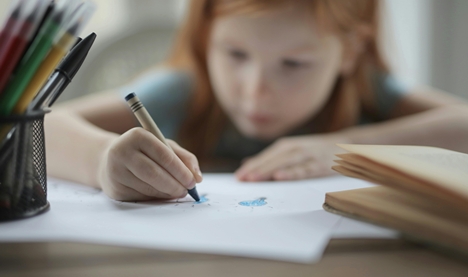
Visual Thinking Strategies - How Drawing and Doodling Support Deeper Learning
In today’s education landscape, the role of creativity is gaining renewed attention. While traditional methods focus heavily on verbal and written expression, visual thinking strategies (VTS) such as drawing and doodling are proving to be powerful tools for deeper learning. These techniques engage the brain in unique ways, encouraging better comprehension, memory retention, and problem-solving skills. Far from being idle distractions, drawing and doodling are now recognised as legitimate and effective learning aids, especially in classrooms where active learning is prioritised.
The Science Behind Visual Thinking
Visual thinking taps into the brain's ability to process and store information through images. Studies show that the human brain processes visuals 60,000 times faster than text. This means when students draw or create mental images of what they’re learning, they are more likely to understand and recall it. Doodling, in particular, helps maintain attention by activating the brain's default mode network — an area linked to creative thinking and memory consolidation.
Doodling and Focus – A Surprising Connection
Many educators once viewed doodling as a sign of inattention. However, recent research challenges this assumption. Doodling can actually support concentration during tasks that may seem monotonous or repetitive. For example, students who doodle while listening to a lecture or reading are often better able to retain key information. This is because the act of drawing keeps the mind engaged without overwhelming cognitive resources.
Drawing to Understand Concepts
Drawing is a form of active learning. When students sketch a scientific process, a historical timeline, or even abstract mathematical ideas, they are not merely reproducing content—they are interpreting it. This interpretation helps personalise the information, making it easier to internalise. In subjects like biology and geography, where spatial understanding is crucial, drawing is especially effective.
Visual Strategies Across Age Groups
Visual thinking can benefit students of all age groups. In early childhood education, drawing helps develop motor skills and supports language development. As students move into primary and middle school, doodling can help organise complex thoughts and ideas. Even at the senior secondary level, students preparing for board exams or competitive entrances can use diagrams, mind maps, and charts to summarise and revise concepts more efficiently.
Comparing Visual and Verbal Learning
| Aspect | Visual Learning | Verbal Learning |
|---|---|---|
| Memory Retention | High due to image association | Moderate, depends on repetition |
| Engagement | Visually stimulating, supports focus | Can lead to fatigue over time |
| Application | Concept mapping, sketching, flowcharts | Note-taking, summaries, essays |
| Suitability | All subjects, especially spatial or conceptual | Theory-heavy subjects like literature |
Visual Learning in Classrooms
Several schools that follow international curricula like IB and IGCSE have already incorporated visual thinking strategies into their teaching methods. Activities such as journal sketching, science illustration projects, and reflective doodle prompts are becoming regular classroom practices. These not only improve subject understanding but also cater to different learning styles, allowing each student to process knowledge in their own way.
Encouraging Visual Expression
To make the most of visual thinking strategies, educators and parents must provide opportunities for free visual expression. This includes letting students draw in margins, create visual summaries after lessons, or even illustrate their daily reflections. It is essential to shift the perception of drawing from being an 'art class activity' to a universal learning tool that transcends subjects and age barriers.
Drawing and doodling are far more than creative outlets—they are essential cognitive tools that support deeper learning. By embracing visual thinking strategies, schools can enhance student engagement, deepen conceptual understanding, and foster a lifelong love for learning. With the right encouragement and space to explore, every child can benefit from the visual path to knowledge.
 (1).png)

